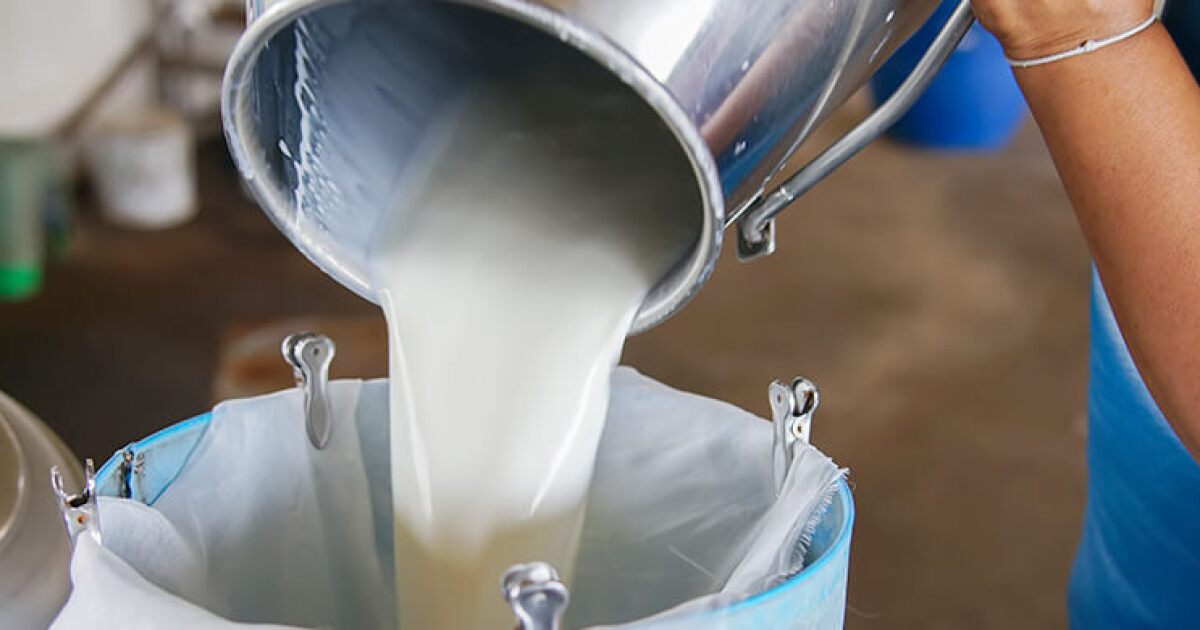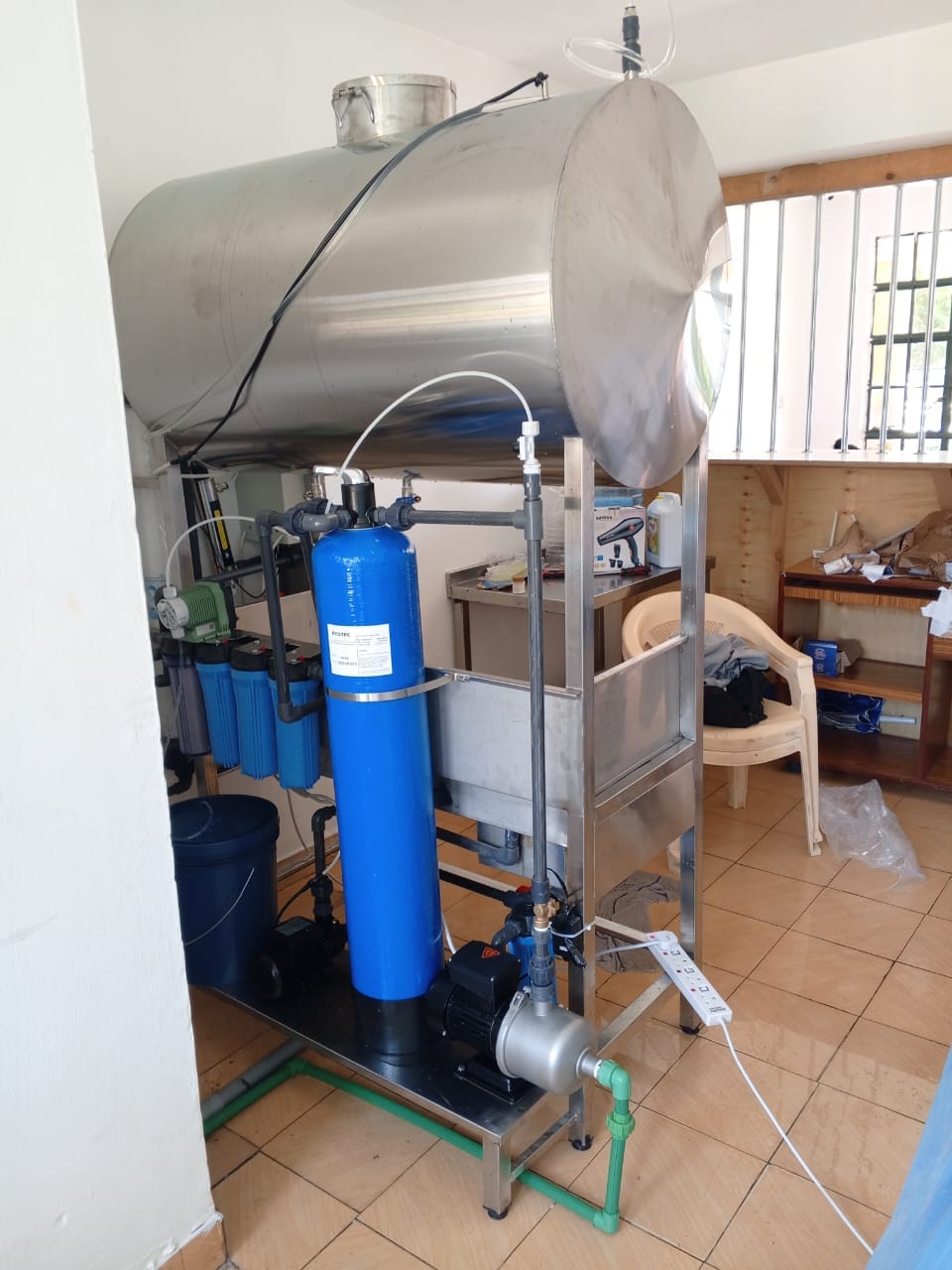Milk pasteurization is the process of heating milk (or milk product) to a predetermined temperature for a specified period without re-contamination during the entire process. The predetermined temperature usually depends on the heat resistance of spoilage microorganisms that the pasteurization program is targeting to destroy.
Some of the best sellers of this milk pasteurizers in Kenya, include Tassmatt Agencies Limited, with offices in Nairobi Contacts 0726-410068. Tassmatt also sells other inline equipments like milk atms, milk coolers, water purification systems, cooking oil atms and much more.
Pasteurization is the process by which food products (such as juice and dairy products) are mildly heated to kill off harmful bacteria, salmonella, and other disease-causing pathogens. These products are thus made safe for consumption. Unpasteurized food, such as raw milk, may also be safe for consumption, but typically for a shorter period of time than products that have undergone pasteurization.
Methods Used in Milk Pasteurization
High-Temperature Short Time (HTST) Pasteurization
- This type of pasteurization is also known as flash pasteurization.
- Flash pasteurization involves heating milk to 71.7°C for 15 seconds to kill Coxiella burnetii, which is the most heat-resistant pathogen in raw milk.
- Since it is technically impossible to bring the milk to that exact temperature, it is always safe to work with a range of temperatures. To be safe, you can heat the milk to between 72°C to 74°C for 15 to 20 seconds.
- This will ensure that the milk is heated uniformly to the required temperature.
- This method is most suitable in continuous pasteurization systems.
- Flash pasteurized milk will keep for between 16 and 21 days. For commercial reasons, some manufacturers intentionally reduce the number of days to push the products out of the shelves.
Low-Temperature Long Time (LTLT) pasteurization
- Here, the temperatures used for pasteurization are reduced to 63°C and held for 30 minutes.
- The prolonged holding period alters the structure of the milk proteins making them better suited for making yogurt.
- This method is best for batch pasteurization where the milk is held in a jacketed vat for effective pasteurization.
- There are many designs of batch pasteurizers in the market that are suitable for both domestic and commercial use.
Ultra-High Temperature (UHT) Pasteurization
- This is a completely closed pasteurization method. The product is never exposed even for a fraction of a second during the entire process.
- It involves heating milk or cream to between 135°C to 150°C for one to two seconds, then chilling it immediately and aseptically packaging it in a hermetic (air-tight) container for storage.
- Despite the risk of Millard browning, UHT pasteurization remains the most popular milk preservation method for safe and stable milk.
Steps of Pasteurization
1. Milk chilling
- Chilling is not a pasteurization process but it is a necessary step when dealing with large volumes of milk.
- Milk leaves the cow’s udder at temperatures above the ambient, which encourages rapid bacterial multiplication that speeds up spoilage.
- However, reducing the temperatures to between 2° C to 5° C arrests bacterial growth and metabolism.
- This provides a head start at keeping the quality before proper pasteurization commences.
2. Pre-heating (regeneration) and Standardization Stage
- After bulking, the chilled milk is heated to about 40°C to facilitate easy separation of butterfat during standardization.
- The system uses regenerative heating, i.e., it uses the heat of the already pasteurized milk to heat up the incoming chilled milk. The chilled milk, in a counter-current flow, cools down the pasteurized milk.
- The purpose of standardization is to obtain a product with uniform content of butter-fat.
3. Clarification stage
- Clarification is essential for removing all foreign matter from the product.
- Large solid particles are removed by straining the milk through tubular metallic filters.
- A centrifugal clarifier (not the one used for standardization) is used to remove all soil and sediments from milk.
- The filters, usually fitted in parallel twins permits continuous processing as one can be cleaned while the other is running.
- Clean the filters regularly (between 2 to 10 operational hours depending on the level of dirt) to avoid the growth of bacteria.
4. Standardization stage
- It is important to standardize milk fat to ensure that you end up with a product of consistent quality in the market. Different consumers prefer different products.
- There are customers who will consume skim milk only while there are those who will take low-fat milk. There are those who will take standardized milk while there are those who prefer high-fat milk.
- Standardization is necessary to ensure that all the customers are catered for. Again, it is during the process of standardization that you get to separate the butterfat that is used for making cream and other fat-based products such as butter and ghee.
5. Homogenization stage
- Homogenization is a physical process of breaking down the milk fat globules into tiny droplets to discourage cream separation.
- Tiny droplets of fat do not rise in a milk column since reducing their sizes also increases their density in the milk.
- A milk homogenizer working at between 100 to 170 bars splits all the fat globules into very tiny droplets that increase the level of integration of the fat in the milk.
- As a result, the milk fat remains uniformly distributed in the milk.
6. Heating section
- Utilizes heat from steam to raise the temperatures of the milk from about 60°C to the required 72°C that is effective to kill the Clostridium botulinum spores.
- The steam exchanges heat with the milk across the PHE plates in a counter-current motion.
- In the end, if this section, there is a temperature sensor, which controls the flow diversion valve.
- Any milk that does not attain the required temperature is diverted back to the heating section until it attains the required temperatures.
7. Holding section
- After heating, milk flows into the holding tubes whose lengths have been calibrated with the milk flow rate to ensure that milk takes at least 16 seconds in the tubes. All the milk must maintain the required pasteurization temperatures at the end of the tubes.
- In case of a breach, a sensor will trigger the flow diversion valve to take the milk back to the heating section to bring the milk to the required temperature.
- Once the milk has attained the required temperatures at the end of the holding tubes, milk flows back to the regeneration section to heat the incoming chilled milk while in itself being cooled down to about 30°C.
8. Cooling/chilling section
- After regenerative cooling of pasteurized milk, it moves to the cooling section of the PHE where chilled water/PHE coolant lowers the temperature of pasteurized milk to 4°C.
- The chilled milk is then pumped to the packaging machines for aseptic packaging and subsequent storage in the cold room.
Significance of Pasteurization
Proper pasteurization is necessary for the following reasons:
- The chief objective of milk pasteurization is to destroy pathogenic bacteria that could have a public health concern. By destroying these microorganisms, the product becomes safe for public consumption.
- Secondly, pasteurization eliminates destructive bacteria and enzymes that could cause spoilage of the product. This leads to the prolonged shelf life of the milk.
- There is a need to ensure that the product can keep for longer periods without expensive storage equipment. Pasteurization will eliminate spoilage bacteria and enzymes and extend the shelf life of the product.
What Are the Benefits of Pasteurization?
Pasteurizing a liquid provides many benefits. These include:
- Eliminating harmful bacteria like Listeria, Salmonella, Listeria, Staphylococcus aureus, Yersinia, Campylobacter, and Escherichia coli O157:H7.
- Preventing diseases like scarlet fever, tuberculosis, brucellosis, and diphtheria.
- Providing a longer shelf life when compared to unpasteurized milk.
- Elimination of volatile aroma compounds from certain foods. Note that this is not necessarily a benefit: many of these aromas can be pleasing to consumers.
- Sanitizing liquids in a shorter time than would be possible with other methods, leading to more effective overall disease control.
References with credit
- https://dairytechnologist.com/wp-content/cache/all/milk-pasteurization//index.html
- https://www.sciencedirect.com/topics/food-science/pasteurized-milk
- https://www.britannica.com/technology/pasteurization
- https://www.sciencedirect.com/sdfe/pdf/download/eid/3-s2.0 B9781855736764500184/first-page-pdf
- https://www.uoguelph.ca/foodscience/book/export/html/1898
- https://www.motherearthnews.com/real-food/pasteurize-raw-milk-at-home





